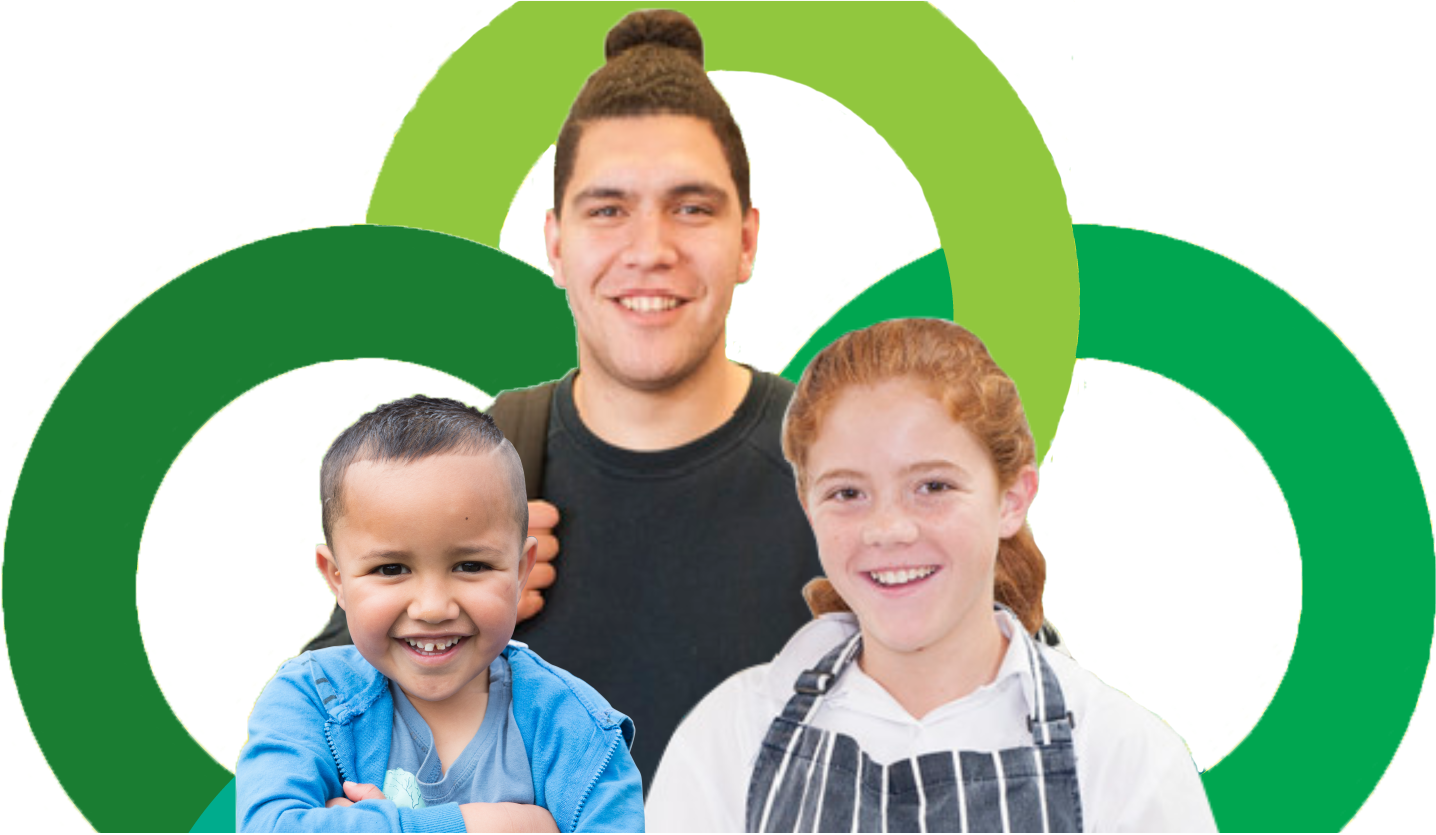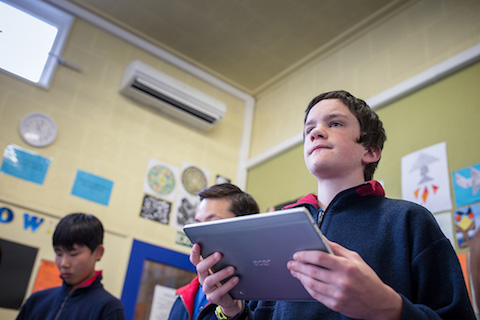
According to the Education Review Office (ERO, 2008), an example of personalised learning in practice involved both a holistic approach to teaching and learning and being learner centred and learner driven:
"A holistic programme that offered an integrated curriculum and pastoral care … [in which] well-being was paramount and pastoral care was of a high quality … students could think critically about their gifts and talents, and communicate their needs. They could identify and reflect upon their strengths and weaknesses, and acknowledge both their personal improvement and the positive outcomes for them participating in the programme (p. 32)"
"I have seen such a change in my daughter. I had not realised how depressed she had become and how obsessed she was with grades and achieving. It’s like part of her person has been unveiled through exposure to another world. Her eyes have been opened, not just through the new experiences she has had, but through the things the others are involved in."
Vanessa talks about young gifted learners and how they and their whānau can be supported through transitions in the education system. She recommends e-portfolios as a successful tool in this process.Vanessa believes parents are the best advocates for their children, are often knowledgeable in many aspects of gifted education and willing to be involved in day to day school life.
I think one area from a parent perspective that could be strengthened is transitioning, especially the early stages from early childhood through to school, whether they are 5 years old or 6 years old. Or even as a 4 and a half year old now that we've had changes with that. Taking the time to work with the centre or school, depending on which perspective you're coming from, to share that information that's already there, and work with the family, and the child, so that you can get to know them and their unique needs. It might mean a longer transition is required if you have a child who is highly anxious, maybe a bit sensitive to changes. It could be much longer than what you anticipate with maybe three visits; it could be something that stretches over 6 months or so. Also changes with the structure or, not so much the structure, but what you’re teaching the children, so not necessarily coming in and learning ABCs, but actually finding out where they’re at already and leading from there, so that those children can settle into school more quickly knowing that they are going to be learning straight off the bat.
With so many options available already out there for gifted kids I think for me, and my vision and the greatest aspirations I have, are to be able to tap into an array of options for our gifted kids. So we have, one day schools and we have a grouping in other ways, such as clusters between schools and coming in with the COOLs for online learning. We also have homeschooling and options which aren’t necessarily seen as so traditional, but it would be wonderful to be able to develop partnerships across all the spectrum of options so that we can best meet the unique needs of each child.
If I was to say anything about advocacy, I would say to families “don't be afraid to go and have conversations with schools”, and I'd ask that schools remain really open to learning and hearing the stories from the journeys of families of gifted children, because often they are not easy journeys, and advocacy can be very, very hard. And it can take some real courage to come into a school environment to have those conversations with schools. So partnering and being a team is really, really important.
Gifted kids can be amazing, a real joy and pleasure, and they bring all the delight as with all children. They stretch us and as a parent they tow us along in their learning journeys…….
I remember when one of my children was two, I was saying to another parent “I don’t think I’ve ever learnt so much in all my life as I’ve learnt in this year”. And that was when he was a little because there was so much learning going on. But equally the journey can be incredibly hard. You're learning about sensitivities and intensities and all the emotions that come into play with that, and all the challenges that come with those not necessarily fitting within social norms and accepted behavioural expression.
Parents and families of gifted children are often experts in their field so to say. Not just having that great depth of understanding in their own children, but they often go out there and they seek out vast amounts of knowledge and understanding, to understand their own children and their own journey. I think it's really important for teachers to be open to receiving that new learning and knowledge from families; again, that partnership is so, so important.
It's all very well to throw around the words about what we have to do, but it's also very helpful to know how we can actually go about these sorts of things. So, one of the strategies that I have become familiar with is the use of e-portfolios. So if you are talking about sharing information from early childhood to primary, or in fact any transition period throughout the schooling, they are a really, really good resource. Not only because you can get information about perspectives from prior educators, but also the voice of the student and the voice of the family, because they all have those opportunities to share and input into that.
It's really wonderful if parents and whānau have an opportunity to come in, onsite, and work with the school. Often families will be prepared to do that and are really keen to share some of their own interests and things that they do, whether professionally or personally, with the students. Myself as a parent, I spent some time running a science club in a primary school and that was fantastic. It met the needs of my own child but it also drew in a whole lot of other children, and children that weren’t necessarily identified as gifted at that stage, but providing a responsive learning environment so that they were able to shine, and teachers could see something that they might not have seen before, which is wonderful. So it was a real win/win for everybody.
Personalised learning is one the six principles of 21st century education (Bolstad et al, 2012).
In this approach students, schools, parents and whānau, professionals and other members of the community work together to create systemic change which provides ‘... support for each individual that recognises and builds upon their diverse strengths, interests, abilities, and needs in order to foster engaged and independent learners able to reach their full potential’ (Leadbeater, 2004, p. 7).
The Ministry of Education (MoE) 2006 publication, Let’s talk about it: Personalising learning, identifies the following set of core components of a personalised programme of learning:
In a holistic approach to personalised learning, the physical, intellectual, social, emotional and spiritual needs of gifted learners are recognised within a responsive and collaborative learning environment that is inclusive of student, parent and whānau voice and agency. Personalised learning is a learner-centred, learner-driven and strengths-based approach that moves beyond differentiated and individualised approaches to teaching and learning by further shifting the locus of control to the learner.
Riley and Moltzen (2010) summarised the impact of one approach to personalised learning for gifted learners and their parents and whānau:
Impact for Learners:
Impact for Parents/Caregivers:
This holistic approach is also encapsulated in ‘hauora’, a Māori philosophy of health and well-being that is unique to Aotearoa/New Zealand and as relevant to educators as it is to health professionals. It comprises taha tinana, taha hinengaro, taha whānau and taha wairua. Dr Mason Durie’s whare tapawhā model compares hauora to the four walls of a whare, each wall representing a different dimension: taha wairua (spiritual side); taha hinengaro (thoughts and feelings); taha tinana (physical side); and taha whānau (family). All four dimensions are necessary for strength and symmetry (see Well-being, Hauora (TKI); Māori model of health: Te whare tapawhā).
"In helping learners to better understand and appreciate the richness of their whakapapa, schools create conditions where Gifted Māori learners can learn how to be gifted and proud, academically exceptional and Māori."
Key terms to catering to the needs of gifted learners are ‘choice, variety, flexibility, appropriateness, relevance, comprehensively planned, enriched, accelerated, real, meaningful, inclusive, integrated, stimulating, complex, depth, and breadth’ (Riley, 2009).
The NZC (MoE, 2007, p. 8) reflects a trend towards student-centred learning and aims to create learners who are ‘confident, connected, actively involved’ lifelong learners.
McClure (as cited in Riley, 2009) defines personalised learning as:
A new sense of purpose:
"All through Year 9 and 10 it was just academic homework, academic stuff. Go to class, go home. Do homework. And I didn’t have anything else … now I’m doing sport, doing cultural stuff, doing a radio show, doing environmental community stuff and doing more than just academics. It’s just shaping me more and allowing me to do more than just academic. So now I have direction. I’d just throw myself at work without really having a purpose other than to get good grades. TDI [Talent Development Initiative] gave me a lot more options."
Student interview, 2008, in Riley & Moltzen, 2010, p. 72.

Barbara Bray
Riley, T. & Moltzen, R. (2010).
Russell, V. & Riley, T. (2011).
Betts, G. T. & Neihart, M. (2010).
Bolstad, R., & Gilbert, J., with McDowall, S., Bull, A., Boyd, S., & Hipkins, R., (2012). Supporting future-oriented learning and teaching - a New Zealand perspective. Wellington, New Zealand: Ministry of Education.
Leadbeater, C. (2004). Learning about personalisation: How can we put the learner at the heart of the education system? Nottingham: Department for Education and Skills.
Riley, T. L. (2009). Teaching gifted and talented students in regular classrooms. In F. A. Karnes & S. M. Bean (Eds), Methods and materials for teaching the gifted (3rd ed., pp. 631–672). Waco, TX: Prufrock Press Inc.